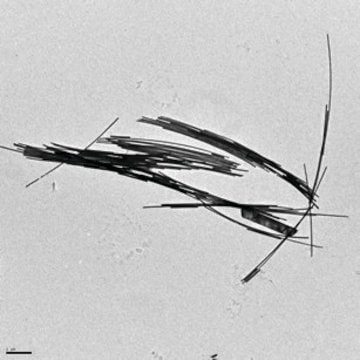745553
Cobalt nanowires
powder, diam. × L 200-300 nm × 100-200 μm
Synonym(s):
Cobalt (nanoparticles), Cobalt element, Cobalt-59
About This Item
Recommended Products
form
nanowires
powder
reaction suitability
reagent type: catalyst
core: cobalt
diam. × L
200-300 nm × 100-200 μm
storage temp.
2-8°C
InChI
1S/Co
InChI key
GUTLYIVDDKVIGB-UHFFFAOYSA-N
Application
Signal Word
Danger
Hazard Statements
Precautionary Statements
Hazard Classifications
Acute Tox. 1 Inhalation - Acute Tox. 4 Oral - Aquatic Acute 1 - Aquatic Chronic 1 - Carc. 1B - Eye Irrit. 2 - Muta. 2 - Repr. 1B - Resp. Sens. 1B - Skin Sens. 1 - STOT RE 2
Storage Class Code
6.1B - Non-combustible acute toxic Cat. 1 and 2 / very toxic hazardous materials
WGK
WGK 3
Certificates of Analysis (COA)
Search for Certificates of Analysis (COA) by entering the products Lot/Batch Number. Lot and Batch Numbers can be found on a product’s label following the words ‘Lot’ or ‘Batch’.
Already Own This Product?
Find documentation for the products that you have recently purchased in the Document Library.
Customers Also Viewed
Our team of scientists has experience in all areas of research including Life Science, Material Science, Chemical Synthesis, Chromatography, Analytical and many others.
Contact Technical Service
















